@Markw4 the speakers and cab are probably the most important part in terms of the final sound.
I have a 1x12 open back and 1x12 closed back that are different sizes. I also have access to a closed back 1x10 and closed back 4x12.
Anyway, part of the experiment is to use a reactive load and impulse responses so I can try infinite cabs.
I really think the power amp response is important for the Feel.
You’re right that it’s possible to get great tones from even the small Fender amp you posted a link for, but even if that amp is hooked up to a great cabinet that works well in a band mix (most important part IMO), if it doesn’t react to the player, then it’s not that great.
Granted, a lot of the tone (EQ, filtering, gain staging, compression) is in the preamp but the power amp can/should be a factor.
I think that’s why solid state amps are built differently and not just guitar preamps into hifi power amps (or at least the good ones aren’t)
I have a 1x12 open back and 1x12 closed back that are different sizes. I also have access to a closed back 1x10 and closed back 4x12.
Anyway, part of the experiment is to use a reactive load and impulse responses so I can try infinite cabs.
I really think the power amp response is important for the Feel.
You’re right that it’s possible to get great tones from even the small Fender amp you posted a link for, but even if that amp is hooked up to a great cabinet that works well in a band mix (most important part IMO), if it doesn’t react to the player, then it’s not that great.
Granted, a lot of the tone (EQ, filtering, gain staging, compression) is in the preamp but the power amp can/should be a factor.
I think that’s why solid state amps are built differently and not just guitar preamps into hifi power amps (or at least the good ones aren’t)
It can if you dial it in right. There is a trick or method I sometimes use to find a more or less good amount of gain for playability. First I set the guitar knobs all at 5. Then I adjust the amp tone and gain for a good sound, and such that if I pluck one string not too hard, maybe kinda light, I get no distortion, but if I pluck two strings then it starts to break up, and if I pluck two or more strings hard then it breaks up a lot. Then I fine tune the guitar pots for tone and for playing sensitivity. Other times I set the guitar controls for a certain effect, say, maximum pickup quackiness. Then adjust the amp controls to work with that. It depends....if it doesn’t react to the player, then it’s not that great.
That said, I also use a lot of right hand techniques to control tone. Sometimes play with the fleshy parts of my finger tips, sometimes lightly brush with a fingernail, sometimes use a pick, but maybe use a blunt corner more than the pointy end. It all depends.
Do you know of any Class D amps/modules that implement current output or mixed-mode output?Current feedback and current output are two different things. IIUC the amplifier you are describing in your post is current controlled output amplifier because the speaker current is the controlled amplifier output quantity vs the other (more common) option of voltage output amplifier. Either of these two output types can be built with voltage feedback or current feedback topologies.
Or any info on how one could perform such a mod?
I'd prefer to:
1. Buy a product (PCB or prebuilt module) that is already designed this way
2. Use some sort of add-on PCB that would work with an existing module.
I'm not really comfortable trying to mod an SMD board.
I have 2 TPA3118 boards and I am going to use them to experiment with, but I think if I tried to mod them, I would just destroy them.
I think it might make the most sense to abandon the Class D amp and focus on Class AB since its more straight forward.
I have a board for a PCB for a Darlington TIP41/TIP147 power amp. I may start a new thread about modifying it to be best used with guitar.
I have a board for a PCB for a Darlington TIP41/TIP147 power amp. I may start a new thread about modifying it to be best used with guitar.
Saved yourself a lot of time.
It is not easy to even get a successful switching supply and switching amplifier to work for a MI ( musical instrument) application.
Yet alone current feedback which has no benefit to MI applications.
Doesnt matter what company wasted time with it. All those designs have been = Abandoned
And no legacy products are continued for many reasons.
Most the successful market eventually moved to somebody else doing the work.
And it took the MI industry over 20 years to learn it.
They use Ice Power modules and then slap a legacy style preamp in front of it. For bass Amps.
Guitar class D is just a amp, no clipping. The software / hardware preamp does the rest.
The power supplies are modified, and extensive changes are made since text book limiters
and fault sensing settings dont work for MI applications.
And it took another 10 years to figure out limiters for the D class amplifiers to work.
And about the same time to figure out how to make switching supplies handle the current of Wide dynamic range of instruments.
Ask Carvin, destroyed by class D Ask Peavey, relentless reliability history, destroyed by class D
Ask Ampeg, destroyed and sold because of the issue with the PF class D series, Ask Orange, multiple power supply failures.
Barely recovered from class D, out sourced engineers to design switch modes that dont fail.
The main emphasis for guitar is preamp and distortion. Thousands of analog designs, erased by FFT and VST software
which emulates legacy amps to perfection. And musicians still think it doesnt.
So build a 6L6 or EL34 pair then.
Power amp is a power amp, your concern is thermal, and limiting so it don't clip and oscillate.
Pre amp does all the rest.
It is not easy to even get a successful switching supply and switching amplifier to work for a MI ( musical instrument) application.
Yet alone current feedback which has no benefit to MI applications.
Doesnt matter what company wasted time with it. All those designs have been = Abandoned
And no legacy products are continued for many reasons.
Most the successful market eventually moved to somebody else doing the work.
And it took the MI industry over 20 years to learn it.
They use Ice Power modules and then slap a legacy style preamp in front of it. For bass Amps.
Guitar class D is just a amp, no clipping. The software / hardware preamp does the rest.
The power supplies are modified, and extensive changes are made since text book limiters
and fault sensing settings dont work for MI applications.
And it took another 10 years to figure out limiters for the D class amplifiers to work.
And about the same time to figure out how to make switching supplies handle the current of Wide dynamic range of instruments.
Ask Carvin, destroyed by class D Ask Peavey, relentless reliability history, destroyed by class D
Ask Ampeg, destroyed and sold because of the issue with the PF class D series, Ask Orange, multiple power supply failures.
Barely recovered from class D, out sourced engineers to design switch modes that dont fail.
The main emphasis for guitar is preamp and distortion. Thousands of analog designs, erased by FFT and VST software
which emulates legacy amps to perfection. And musicians still think it doesnt.
So build a 6L6 or EL34 pair then.
Power amp is a power amp, your concern is thermal, and limiting so it don't clip and oscillate.
Pre amp does all the rest.
@WhiteDragon There are also other companies that have proprietary class d power amps: DV Mark/Mark Bass, Aguilar, and Quilter. I actually have a friend who plays out weekly and has had a SD Power Stage 170 since it was release and hasn't ever had a problem.
Which Orange amp were you referring to? The only Orange amp I know of that uses class D is their Terror Bass, which is not an ICEPower module. They use a "laptop style" power supply with their Mirco Terror amps, but those are external and so inexpensive to replace, I doubt it hurt them in any way.
I agree that a cheaply made power supply won't last, but I don't think all smps are bad. A well made one will be quieter and more consistent.
EDIT: I also think we have different definitions of "destroyed" because all but one of the companies you mentioned is still in business and making amps.
Which Orange amp were you referring to? The only Orange amp I know of that uses class D is their Terror Bass, which is not an ICEPower module. They use a "laptop style" power supply with their Mirco Terror amps, but those are external and so inexpensive to replace, I doubt it hurt them in any way.
I agree that a cheaply made power supply won't last, but I don't think all smps are bad. A well made one will be quieter and more consistent.
EDIT: I also think we have different definitions of "destroyed" because all but one of the companies you mentioned is still in business and making amps.
So, out of curiosity I reached out to Rod Elliot and asked him about current feedback/drive in Class D amplifiers. This is what he said:
You can add the required circuitry externally, since very few PWM amps have the necessary input circuitry to allow the addition of current feedback.
An opamp can be used to buffer the input and provide the extra input needed to get current feedback. This isn't a process I've tested or documented, but it has been simulated and I know it will work.
If you look at the circuit for the P27 power amp, that shows the current-sense resistor, and the feedback is simply applied to an input opamp, rather than to the input pair of the amp. You will need to experiment, because there's always the risk of instability due to phase shift through the Class-D amp.
Here is the power amp schematic provided in Project 27:

You can add the required circuitry externally, since very few PWM amps have the necessary input circuitry to allow the addition of current feedback.
An opamp can be used to buffer the input and provide the extra input needed to get current feedback. This isn't a process I've tested or documented, but it has been simulated and I know it will work.
If you look at the circuit for the P27 power amp, that shows the current-sense resistor, and the feedback is simply applied to an input opamp, rather than to the input pair of the amp. You will need to experiment, because there's always the risk of instability due to phase shift through the Class-D amp.
Here is the power amp schematic provided in Project 27:
Here is a thought:
I currently have a couple TPA3118 boards would it be possible to design a pcb to use with each of them to implement cfb?
I'm guessing it would connect from the negative speaker terminal on one end and to the input on the chip?
Based on his comments it would probably contain a few resistors and an opamp? Maybe a capacitor?
I currently have a couple TPA3118 boards would it be possible to design a pcb to use with each of them to implement cfb?
I'm guessing it would connect from the negative speaker terminal on one end and to the input on the chip?
Based on his comments it would probably contain a few resistors and an opamp? Maybe a capacitor?
Agreed @Freedom666
Something like this could be really cool for setting up mono amplifiers for instrument use.
More knowledgable minds would need to chime in and tell me if it’s possible or not.
It would also be good to know what opamp would be best to use and how to calculate the correct values of components (or what the values of the components would have on the end result).
Something like this could be really cool for setting up mono amplifiers for instrument use.
More knowledgable minds would need to chime in and tell me if it’s possible or not.
It would also be good to know what opamp would be best to use and how to calculate the correct values of components (or what the values of the components would have on the end result).
I've been doing some research on this and looking at some amplifiers that have been stated to use current (mode) feedback.
There is also the CFB vs VFB article from Elliott Sounds for reference.
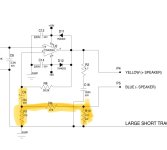
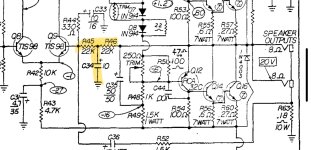
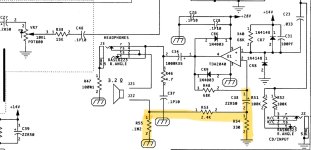
Unless I am missing something, it looks like the majority of this is feedback is done via 2-3 resistors and a capacitor.
But based on Rod Elliot's email to me an opamp could (should?) be used to buffer the input. Could this be a readily available IC or would a discrete opamp like Rod Elliott's DIY CFB Opamp ?
The other question is, does this hypothetical board need to connect to the input of the amplifier board or to a specific pin. If it needs to connect to a specific pin, which one?
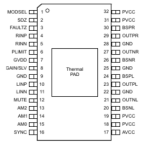
There is also the CFB vs VFB article from Elliott Sounds for reference.



Unless I am missing something, it looks like the majority of this is feedback is done via 2-3 resistors and a capacitor.
But based on Rod Elliot's email to me an opamp could (should?) be used to buffer the input. Could this be a readily available IC or would a discrete opamp like Rod Elliott's DIY CFB Opamp ?
The other question is, does this hypothetical board need to connect to the input of the amplifier board or to a specific pin. If it needs to connect to a specific pin, which one?

Hi,
I designed and built some boutique tube amps back into early 2000's and since last 2-3 years I'm back working to my all-time preferred overall win-win configuration: a tube preamp and a solid state power amp.
Very recently I added also a H&K StompMan to my inventory, and I find it really impressive. It does all the tube power amp emulation/compensation in a solid state section before a "plain" class D power amp. I run the preamp of my tube amps into it with great results but I can say it's just 90% ok. (never tried Quilter's, maybe they are next)
Guitar speakers are one of the most relevant part of the guitar sound/timbre/dynamics: a celestion Greenback and a Vintage 30 (in the same cabinet) sound completely different to any guitar player unless you connect them to a high damping factor power amp making them sounding more or less equally "lifeless" and "uninspiring". There's still no way you can completely compensate higher up in the chain.
So my current best solution are some of those small cheap 3118/3116 modules with a 4-5ohm resistor between them and the speaker. My amps tube power amp (8ohm speaker output) have a "complex" output impedance around 4ohm so it's still not 100%, but I actually can't stop play them, I can go on for hours without the need to unplug and go back to my (tube) power amp.
In search for a more efficient solution these maybe can help:
https://www.ti.com/lit/ab/slya031a/slya031a.pdf

Cheers
Teo
I designed and built some boutique tube amps back into early 2000's and since last 2-3 years I'm back working to my all-time preferred overall win-win configuration: a tube preamp and a solid state power amp.
Very recently I added also a H&K StompMan to my inventory, and I find it really impressive. It does all the tube power amp emulation/compensation in a solid state section before a "plain" class D power amp. I run the preamp of my tube amps into it with great results but I can say it's just 90% ok. (never tried Quilter's, maybe they are next)
Guitar speakers are one of the most relevant part of the guitar sound/timbre/dynamics: a celestion Greenback and a Vintage 30 (in the same cabinet) sound completely different to any guitar player unless you connect them to a high damping factor power amp making them sounding more or less equally "lifeless" and "uninspiring". There's still no way you can completely compensate higher up in the chain.
So my current best solution are some of those small cheap 3118/3116 modules with a 4-5ohm resistor between them and the speaker. My amps tube power amp (8ohm speaker output) have a "complex" output impedance around 4ohm so it's still not 100%, but I actually can't stop play them, I can go on for hours without the need to unplug and go back to my (tube) power amp.
In search for a more efficient solution these maybe can help:
https://www.ti.com/lit/ab/slya031a/slya031a.pdf
Cheers
Teo
Sorry actually don't know, I found it while I was searching how to implement current feedback in a generic bridge amp configuration, I think it's a generic solution that is ok with all the common class D chips.Is the schematic you shared in reference to adding an OPA1632 (and resistors) to a TDA8932 board?
A problem with that circuit is the differential input, so with common class D boards either board or circuit modification is required. If you search this forum for TPA3118/TPA3116 threads you'll find some modifications to the boards to implement PFFB and use them to implement (post filter) current feedback.
You are right, low damping factor is mandatory for guitar speakers sound/interact/feel the way they are expected to.I understand the idea of having emulation before the power amp, but it wouldn't allow for the same kind of interaction/feel that guitar players really want from their amps.
So a problem reformulation is: how do we easily modify common class D boards to have a low, or even better adjustable, damping factor?
Alternatively someone (with proper skills) can design a class D amp with adjustable damping factor and a PCB to build it.
Teo
Mega, there was the Joe R. DIY current source amp thread. Maybe something there could be modified for Guitar/Midi use?
I was thinking of building a pair for home HIFI use. I like the idea of throwing a switch, plugging my guitar into one...
I was thinking of building a pair for home HIFI use. I like the idea of throwing a switch, plugging my guitar into one...
Joe Rasmussen "Trans-Amp" - 40 Watt Transconductance "Current Amplifier"
.
PLEASE BUILD THIS WITH DUE CAUTION!
[Click on it to enlarge]
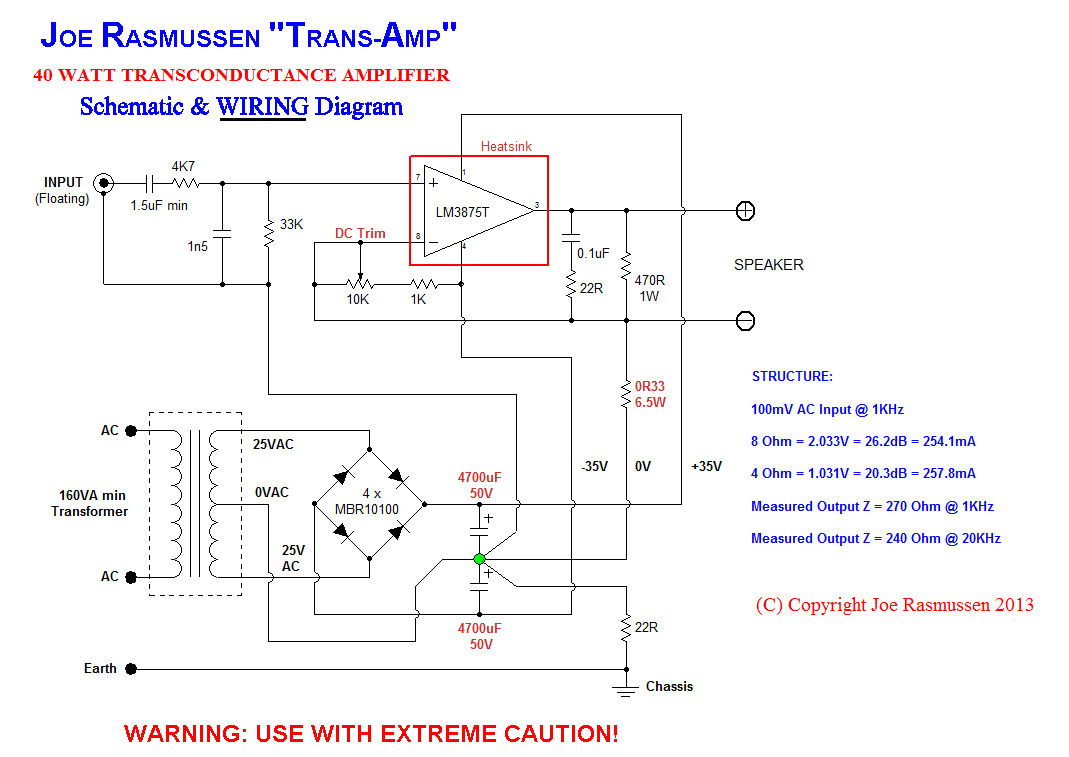
There are good reasons why there are no "Current Amplifiers" on the market today, with exception of the Nelson Pass F1 and F1J amplifiers. This DIY project is about building a low cost 40 Watt Transconductance Amplifier using National Semiconductor's LM3875T.
WHY BUILD ONE?
Before going ahead: READ THIS BY NELSON PASS: Current...
.
PLEASE BUILD THIS WITH DUE CAUTION!
[Click on it to enlarge]

There are good reasons why there are no "Current Amplifiers" on the market today, with exception of the Nelson Pass F1 and F1J amplifiers. This DIY project is about building a low cost 40 Watt Transconductance Amplifier using National Semiconductor's LM3875T.
WHY BUILD ONE?
Before going ahead: READ THIS BY NELSON PASS: Current...
- Joe Rasmussen
- Replies: 720
- Forum: Chip Amps
For guitar use a "mixed mode" amp is needed, with an output impedance typically ranging from 2 to 20 depending on what you want to achieve, not a "current source" amp.
Quilter amps are "mixed mode" class D amps with an output impedance equal to that of the tube amp they emulate. Quilter owns a patent on this so no other amp builder can do that without a license from them. This maybe explains why there aren't other amps like that on the market.
With a ground referenced output like Rasmussen's one above it's easy to implement with few resistors if it already has an inverting input available; see Rod Elliot's site and @Megatrav post here.
Almost all class D modules and amps in general are not ground referenced output (I don't know any) but "bridged output", so things start to get more complicated and modifying one not a viable idea.
But class D amps can output a lot of power with high efficiency, so if your need is a 20-40 watt tube amp equivalent you can easily get a 100w class D amp/module and put a proper resistor between it and the speaker. Actually some high wattage resistors in parallel are needed because they are going to dissipate a lot of power (like tubes do). Using some halogen bulbs you can even emulate the tube amps sag.
Cheers
Teo
Quilter amps are "mixed mode" class D amps with an output impedance equal to that of the tube amp they emulate. Quilter owns a patent on this so no other amp builder can do that without a license from them. This maybe explains why there aren't other amps like that on the market.
With a ground referenced output like Rasmussen's one above it's easy to implement with few resistors if it already has an inverting input available; see Rod Elliot's site and @Megatrav post here.
Almost all class D modules and amps in general are not ground referenced output (I don't know any) but "bridged output", so things start to get more complicated and modifying one not a viable idea.
But class D amps can output a lot of power with high efficiency, so if your need is a 20-40 watt tube amp equivalent you can easily get a 100w class D amp/module and put a proper resistor between it and the speaker. Actually some high wattage resistors in parallel are needed because they are going to dissipate a lot of power (like tubes do). Using some halogen bulbs you can even emulate the tube amps sag.
Cheers
Teo
I think there was some discussion in that thread of a variable output? But that would have to be figured out and added to the schematic.
- Home
- Live Sound
- Instruments and Amps
- Current Feedback Class D examples?